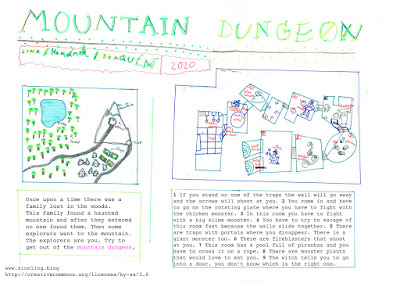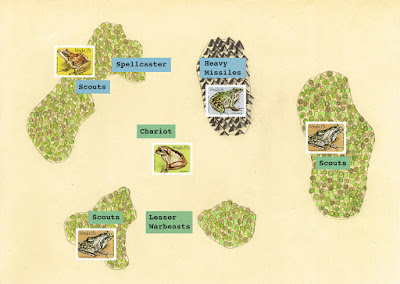I'm interested in "The Portable Wargame" and have a few questions about it.
I would like to play the game using hexagons.
How many hexagons do I need to play the game?
Karl,
The rules are written for square and hex grids, and I suggest a minimum of 8 x 8 squares or 9 x 8 hexes. You can use a larger grid, and I’ve fought games with a 6 x 9 hexed grid, but 8 x 8/9 x 8 are what the rules were originally written for.
>> And how many figures do you need on each side?
Sides are made up of units (aka bases), and most players mount their figures on multi figure bases ... so there is no pre-set number of figures. I recommend each player has 10 to 12 unit/bases. (Some players use blocks of wood for units.)
>> To play ancient battles do I need the book "Developing The Portable Wargame" or are the main rules sufficient?
To play Ancient battles, then I’d recommend the rules in DTPW. You don’t need the first book in the series to fight wargames, but you might find it useful to read TPW at some point.
>> It would probably be easy to transfer DBA army lists to your game, wouldn't it?
The DBA armies should work with the PW Ancient rules.
>> What is the difference between "The Portable Colonial Wargame" and "When Empires Clash!"?
WHEN EMPIRES CLASH! is a forerunner of TPCW, but is a different set of rules with different mechanisms. That said, the Army Lists in WEC! are useable with the PW rules.
>> Is your book "The Portable Colonial Wargame" also a standalone game?
All my books are stand alone, although quite a few people have bought all of them and ‘mix and match’ from them to meet their particular requirements. For example, I know someone who uses the basic 19th century rules for PW with the naval rules from Gridded Naval Wargames and the campaign rules from PCW.
>> I thought "The Portable Wargame" was your core rulebook and the other books were supplements.
Does "The Portable Wargame" have a historical theme as well or is it a generic wargame?
The PW book was originally intended to be a ‘one off’, and contained a brief history of gridded wargames and several explanatory chapters about the different types of grids available, lines of sight, basing models, solo play etc. There were also two sets of basis rules, one for the 19th century and one for the early/mid 20th century.
The PW rules are generic BUT are designed so that the mechanisms can be adapted for specific historical periods or to meet individual players’ requirements. The DPW shows this as it contains Ancient rules, more detailed mid 20th century, and Air Combat rules. It also has chapters about different ways the rules can be adapted, an example of a mini-campaign, and some examples of Army Lists (including balanced and unbalanced forces).
PCW has two sets of rules for those who want quick games with a few figures and longer games with more figures, a more developed campaign system, and a terrain generator.
PNW has four sets of rules, one that is really very basic and three for different levels of command (brigade, divisional, and corps-level battles). It also looks a different types of card-driven move mechanisms, as well as unit and commander grading.
>> Is it possible to play ancient naval battles with "Gridded Naval Wargames“?
The GNW rules are designed to be used with steam-powered, iron & steel warships BUT I know that several players have adapted them for earlier periods, including ancient naval warfare where ramming was the main method of combat.
I hope that this has been helpful.
I hope that this has been helpful.
All the best,
Bob
>> Thanks a lot. This has been very helpful.
All the best,
Karl
>> Thanks a lot. This has been very helpful.
All the best,
Karl
PS
I got your books The Portable Wargame, Developing the Portable Wargame and The Portable Colonial Wargame on Lulu.
I'm looking forward to reading them and trying out your game.
I got your books The Portable Wargame, Developing the Portable Wargame and The Portable Colonial Wargame on Lulu.
I'm looking forward to reading them and trying out your game.























